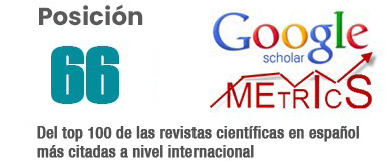The role of the family in the formation of environmental values
DOI:
https://doi.org/10.62452/a5pryq45Keywords:
Family, Formation of values, environmental valuesAbstract
The family is considered the fundamental nucleus of society, and additionally, it constitutes the central axis of formation of its members, especially children, as the first life experiences develop within them, which, according to the dynamics existing within the home, it will become a model of future behavior. In fact, a variety of experiences are produced in this nucleus, which include values, routines, feelings, customs, learning, among others, whose custodians are the children, having a modeling effect on their behavior. Within this scope, the inclusion of environmental value cannot be ignored, which consists in establishing a harmonious relationship of respect and protection towards the environment, where the use of natural resources prevails, from a perspective of responsibility and defense in conservation of the nature. Hence, the purpose of this article was to analyze the role of the family in the formation of environmental values. It was based on a field investigation. It is concluded that since the family is an essential space of influence on the behavior of its members, it is essential to strengthen the protection of nature in them, since the planet is in serious danger and therefore humanity.
Downloads
References
Acuña, M. (2016). Videojuego: una estrategia lúdica virtual para orientar la educación ambiental en niños en edad preescolar. Revista Aletheia, 8(2), 122 - 149
Arroyo, E. (2012). El Derecho Fundamental al Medio Ambiente. Editorial Porrúa.
Bello, R. (2004). Práctica de valores en niños escolares. Editorial Básica.
Bellver, V. (1993). Paradigma ecológico y nuevo derecho humano al medio ambiente.(Tesis doctoral). Universidad de Valencia.
Briceño, M., Sánchez, A., & Hernán, F. (2012). Modelo de gestión ambiental basado en valores conservacionistas que contribuya a la integración Universidad- Comunidad. Revista Daena International Journal of Good Conscience, 7(1), 13-24.
Cedeño, J. (2016). Programa Educativo para la Promoción de los Valores Ambientales Desde el Liceo Bolivariano Ciudad de Nutrias, Ubicado en el Municipio Sosa, Estado, Barinas. (Tesis de Maestría). Universidad de Carabobo.
Cruz, R. (2014). Valores ambientales en educación preescolar. Revista Alternaciencias, 46-50.
Fernández, L. (2008). Manual para formación en medio ambiente. Editorial LEX NOVA SA.
Ferrete, C. (2006). El Derecho Humano a un Medio Ambiente Sano en el Tratado de la Constitución para Europa. RECERCA. Revista De Pensament I Anàlisi, (6), 141-156.
Ordax, E. (2018). Educar a los niños en el respeto a la naturaleza. http://www.cometelasopa.com/educar-los-ninos-respeto-la-naturaleza/
Organización de las Naciones Unidas. (1972). Declaración de Estocolmo. ONU. http://www.upv.es/contenidos/CAMUNISO/info/U0579218.pdf
Ortega Ruíz, R., & Mínguez Vallejos, R. (2001). Los valores en la educación. Editorial Ariel Educación.
Penas, S. (2008). Aproximación a los Valores y Estilos de Vida de los Jóvenes de 13 Y 14 Años de la Provincia de A Coruña. Universidad de Santiago de Compostela.
Pineda, J. (2017). El Medio Ambiente en los Niños. https://encolombia.com/medio-ambiente/interes-a/medio-ambiente-los-ninos/
Rodríguez, C. (2012). El Derecho Humano al ambiente sano, Los derechos ambientales desde la perspectiva de los derechos humanos. Rubinzal Culzoni Editores.
Sosa, N. (1994). Ética Ecológica. Editorial Libertaria.
Vega, P. (2004). La educación ambiental en la formación inicial del profesorado. Análisis de un modelo para el desarrollo de la competencia para la acción favor del medio. (Tesis Doctoral). Universidad de La Coruña.
Vidal, R. (2014). La responsabilidad civil por daño ambiental en el sistema judicial peruano. Revista Desafíos, 2, 30-40.
Downloads
Published
Issue
Section
License
Copyright (c) 2021 Yeriny del Carmen Conopoima Moreno (Autor/a)

This work is licensed under a Creative Commons Attribution-NonCommercial-ShareAlike 4.0 International License.
Authors who publish in Revista Metropolitana de Ciencias Aplicadas (REMCA), agree to the following terms:
1. Copyright
Authors retain unrestricted copyright to their work. Authors grant the journal the right of first publication. To this end, they assign the journal non-exclusive exploitation rights (reproduction, distribution, public communication, and transformation). Authors may enter into additional agreements for the non-exclusive distribution of the version of the work published in the journal, provided that acknowledgment of its initial publication in this journal is given.
© The authors.
2. License
The articles are published in the journal under the Creative Commons Attribution-NonCommercial-ShareAlike 4.0 International License (CC BY-NC-SA 4.0). The terms can be found at: https://creativecommons.org/licenses/by-nc-sa/4.0/deed.en
This license allows:
- Sharing: Copying and redistributing the material in any medium or format.
- Adapting: Remixing, transforming, and building upon the material.
Under the following terms:
- Attribution: You must give appropriate credit, provide a link to the license, and indicate if any changes were made. You may do this in any reasonable manner, but not in any way that suggests the licensor endorses or sponsors your use.
- NonCommercial: You may not use the material for commercial purposes.
- ShareAlike: If you remix, transform, or build upon the material, you must distribute your creation under the same license as the original work.
There are no additional restrictions. You may not apply legal terms or technological measures that legally restrict others from doing anything the license permits.




